The Must-Read Guide to Shipping Container Maintenance
 Marissa Morin | Mar 10, 2021
Marissa Morin | Mar 10, 2021

Here at Falcon, we’ve worked with shipping containers for over a decade, so we know a thing or two about shipping container maintenance and upkeep. In fact, we’ve created this ten-step guide – that you can download for free – to assist organizations looking to improve the longevity and reliability of modified container structures.
10 Helpful Steps for Shipping Container Maintenance
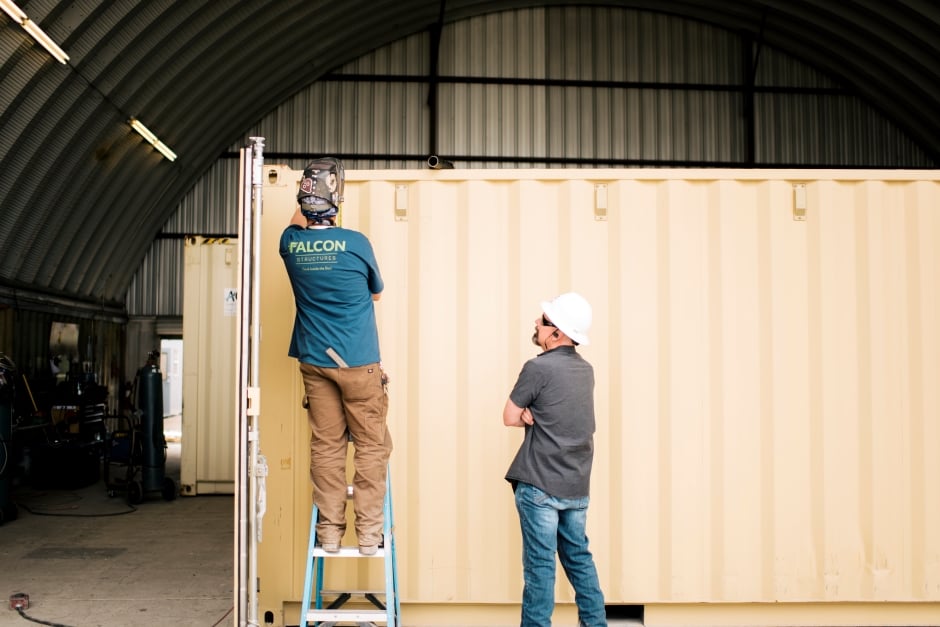
1. Purchase from a reputable source
Make sure you purchase a shipping container from a reputable source. In the container world, there’s a big difference between “one-trip” and “used” shipping containers. One-trip means the container has only traveled overseas once, whereas a used container has traveled overseas multiple times, having received more exposure to wear and tear. Shipping container maintenance first begins with understanding what container you need based on why you need your structure. Furthermore, working with a container manufacturer with an established quality control process to modify your unit helps ensure you get a top-quality container.
2. Avoid putting excessive weight on the roof
Containers can hold a lot of weight, but the weight is held at the four corners of the unit, not across the roof. Keep this in mind if you store items on your roof. To protect your container and what’s held inside, you must ensure the corners carry the load. If roof storage is important to you, consider asking your container manufacturer to reinforce the roof.
3. Remove debris, standing water, ice, and snow from the roof
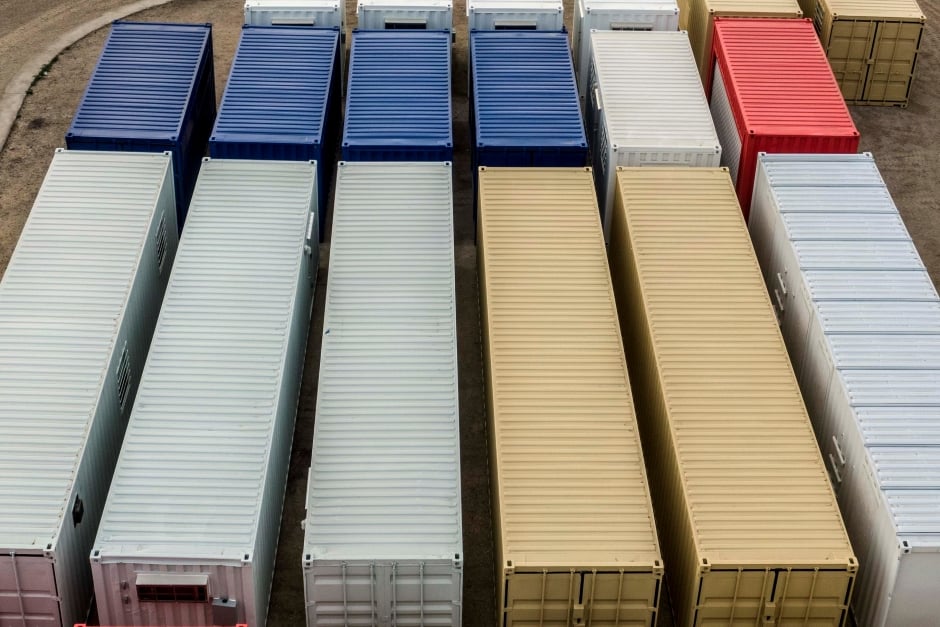
Standing water and debris can contribute to rust and thinning metal on a container roof, despite the advanced durability of the corten steel. After a weather event, make sure you inspect the roof and remove standing water, as necessary.
4. Follow manufacturer recommendations for climate control system maintenance
Built-in air-conditioning units help manage moisture and humidity levels in a shipping container, helping the containers remain in top condition for a longer period. Take care of shipping container air conditioning units as you would with any air conditioning unit – replace air filters regularly and call the appropriate contractor for maintenance, service, and repair.
5. Inspect for rust, dents, scratches, moisture, and debris
No matter where your container unit is located, moisture can accumulate over time. Best shipping container maintenance practice is to inspect your unit for scratches, dents, and peeling paint and tend to the steel as necessary. Touching up paint can help prevent thinning of the metal.
6. Clean off visible dirt and surface rust
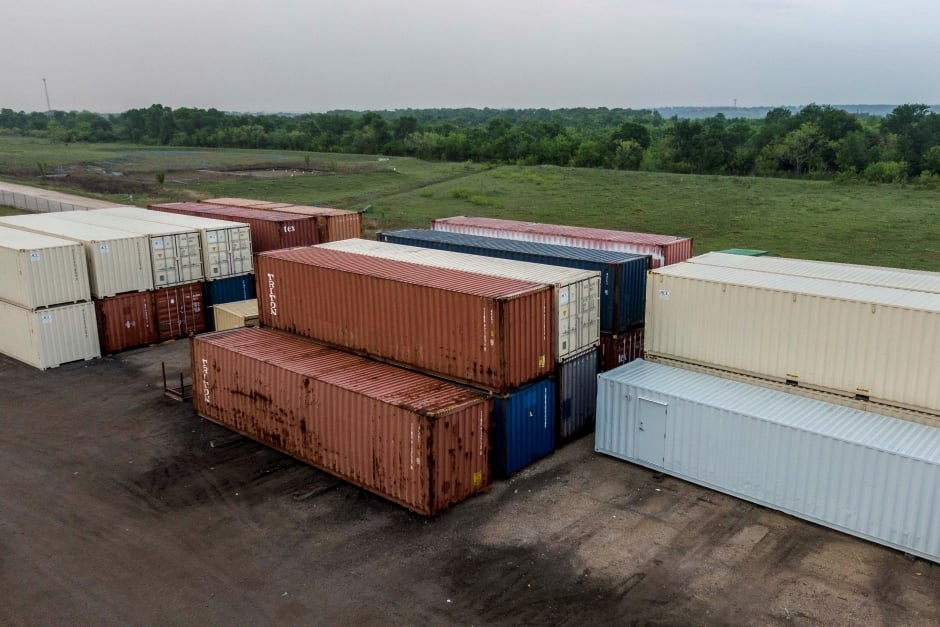
Regularly remove dirt and rust from the exterior of your container unit. You can use a commercial wetting agent or mild bleach, a water hose, and broom to release rust and dirt. For larger dents and rust spots, call a professional to repair and repaint your shipping container.
7. Inspect and replace caulk and weather stripping annually
To further prevent the harmful affects of moisture, replace caulk and weather stripping when they peel or crack. Maintaining desired moisture levels around windows and doors helps your climate control system work more efficiently as well.
8. Lubricate cargo door hinges as needed
After several years not in use, coupled with moisture build up, cargo door hinges may need lubrication. Simply apply a little penetrating lubricant to restore the hinges.
9. Check plumbing ports, drain lines, and electrical connections annually
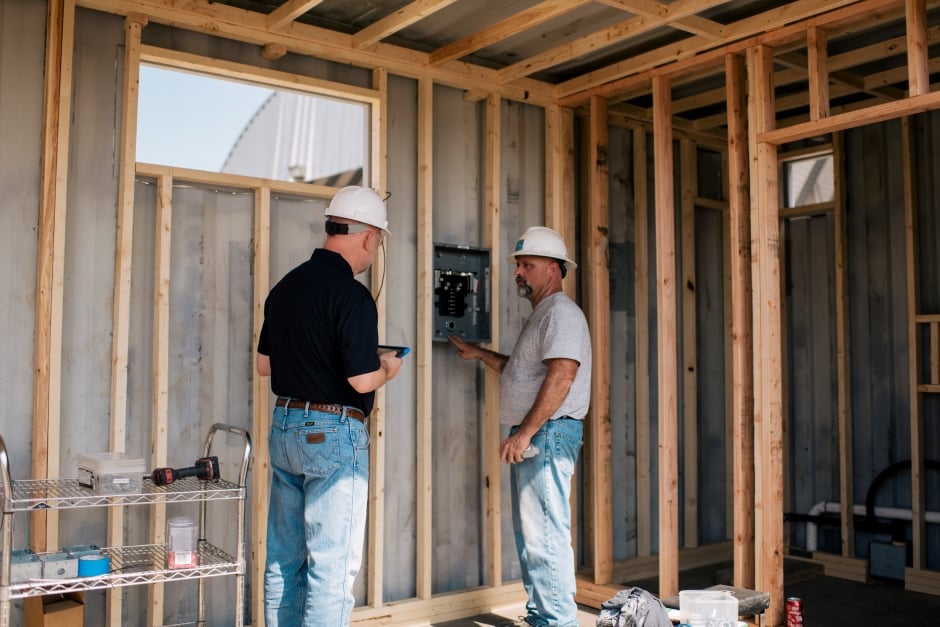
For shipping container structures with plumbing modifications, drain lines may shift if your container becomes unlevel. Regularly inspect the drain lines and plumbing connections to prevent possible plumbing challenges.
The same goes for electrical connections. Make sure you regularly inspect electrical connections for signs of damage and tighten the connections that may have become loose or disconnected. Be sure to call a licensed electrician to ensure your own safety.
10. Monitor the container for settling and re-level
If you install your shipping container on a softer surface, like asphalt or clay, the container may settle over time. Occasionally wildlife, moisture build up, and door hinge issues may arise. To combat potential challenges, you’ll need to relevel your container unit. The best way to avoid these issues is to speak with your container modification manufacturer who can recommend proper foundations, support mechanisms, or other systems to deter settling on softer surfaces.
The Best Shipping Container Maintenance is Proactive
To ensure your shipping container structure serves your organization for many years to come, communicate your needs with your container manufacturer so they can set you up for success and advise you according to their expertise. Here at Falcon Structures, we’re happy to discuss your project in greater detail and point you in the right direction. Give us a call at 877-704-0177 or emailing Sales@FalconStructures.com.
SUBSCRIBE
- Shipping Container Modifications
- How-Tos
- Workspace
- Commercial Construction
- Multi-Container Buildings
- Storage Solutions
- Industrial Enclosures
- Bathrooms & Locker Rooms
- Oil & Gas
- Climate Control
- Green Building
- Industry Insight
- Living Space
- Military & Training Facilities
- Water Treatment Solutions
- Energy
THINK INSIDE THE BOX®
WITH OUR BLOG
Get everything from shipping container basics, to detailed how-tos and industry news in our weekly blog. Stay inspired and subscribe!
RELATED BLOGS
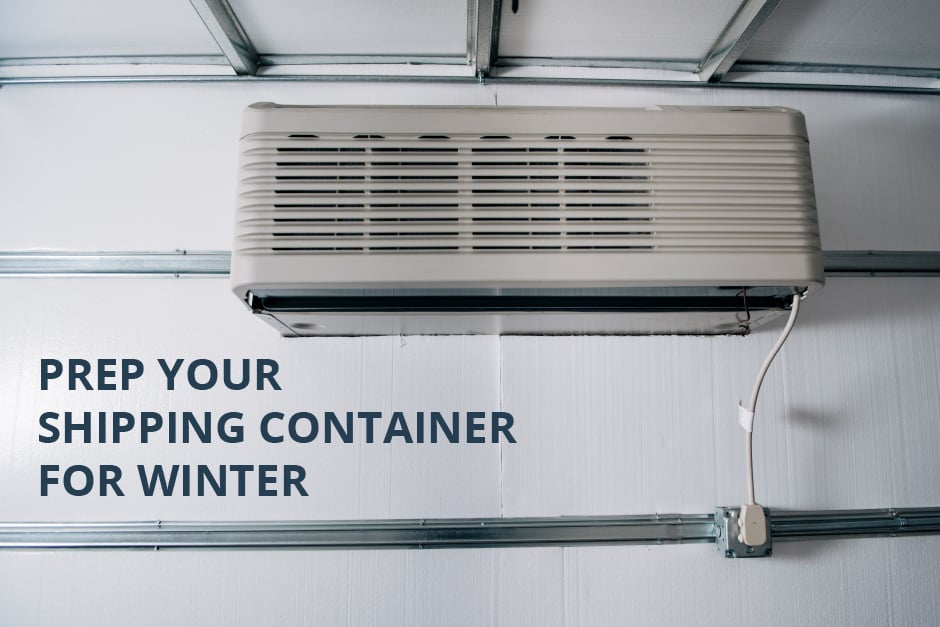
7 Shipping Container Maintenance Steps to Help You Prep for Winter
Marissa Morin | Jan 6, 2021 | 2 min read
READ MORE
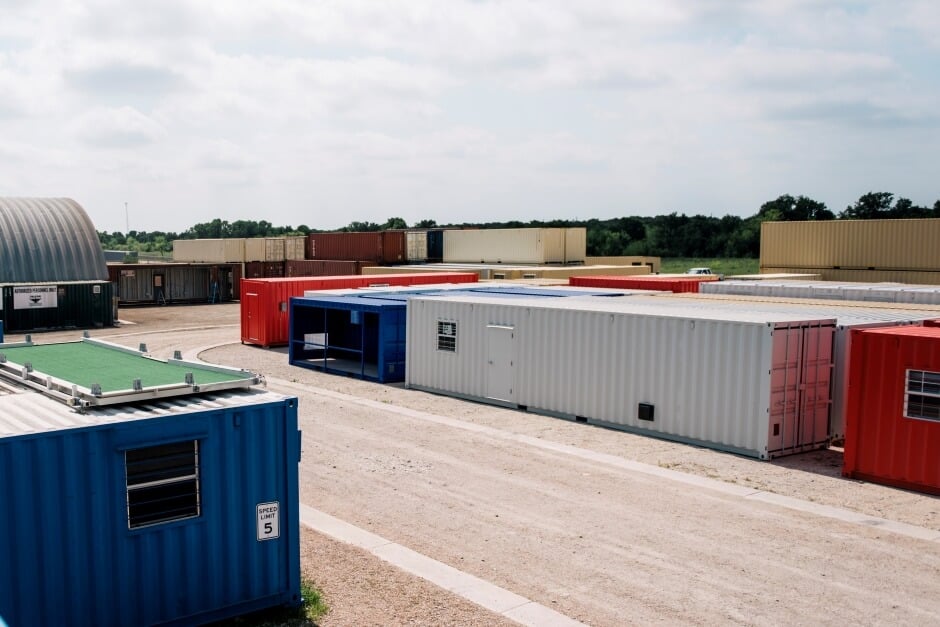
Guide to Shipping Container Sizes & Types
Becca Hubert | Dec 13, 2023 | 4 min read
READ MORE
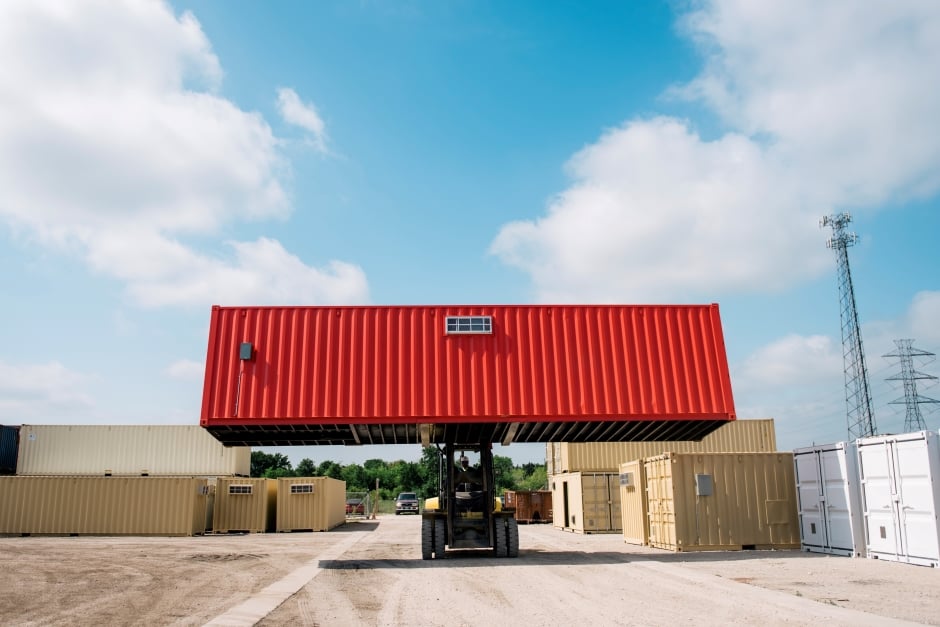
Quick Shipping Container Delivery When You Need It Most
Marissa Morin | Apr 22, 2020 | 3 min read
READ MORE
